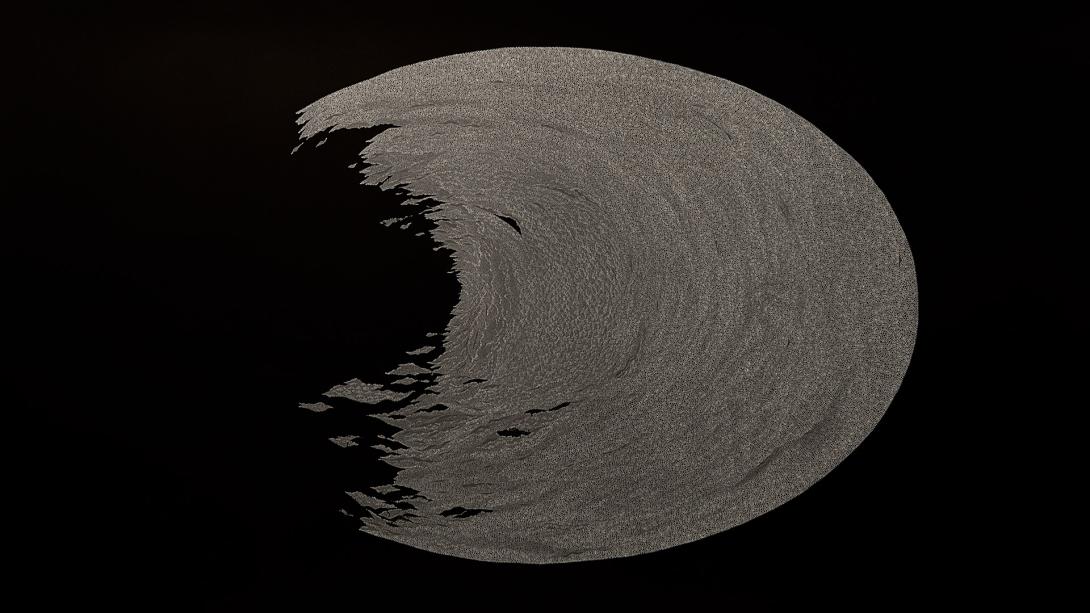Waqas Khan
APT9
Born 1982 Akhtarabad, Pakistan
Lives and works in Lahore, Pakistan
Waqas Khan creates large, abstract compositions with painstakingly repeated patterns and motifs. By experimenting with the physical process of drawing, he makes intricate works using a rapidograph, a high-precision architectural tool. The drawings consist of carefully repeated lines and dots, which, once connected together, emerge as geometric shapes with an organic or cellular appearance. Khan works on wasli paper, traditionally used in miniature painting, which is sufficiently thick to bear the weight required for the artist to control each line with two hands using the rapidograph. The process is a strongly physical one, yet the resulting drawings appear light and meditative.

Waqas Khan / Pakistan b. 1982 / Oracle II 2018 / Archival ink on wasli paper / 132 x 244 cm / Thimblestitch and Bramble Collection / © Waqas Khan / Image courtesy: the artist and Sabrina Amrani Gallery
Waqas Khan painstakingly creates abstract compositions that he has described as a ‘diary in a different language’. He gradually masses forms through tiny marks, a fastidiously controlled practice with seemingly infinite possibilities. He draws with a 0.1mm Rapidograph, a high-precision architectural pen, on large architectural drawing boards that are capable of steadying oversized sheets of handmade wasli paper. The thickness of the custom-made wasli paper bears the weight of the artist controlling his lines and marks with two hands.
Khan’s works require intense periods of concentration over long, solitary hours in the studio, and yet the finished works assume a transcendental and meditative character. The textures of the repeated patterns appear like loosely woven cloths that seem to float in space and veil the blank voids around them, occasionally culminating in a perfect geometric shape; at other times, these shapes break apart before they fully form. In the excessive use of repetition, any minor interruption captures the attention, and small openings and voids appear like tears, disrupting an otherwise infinite rhythm.
